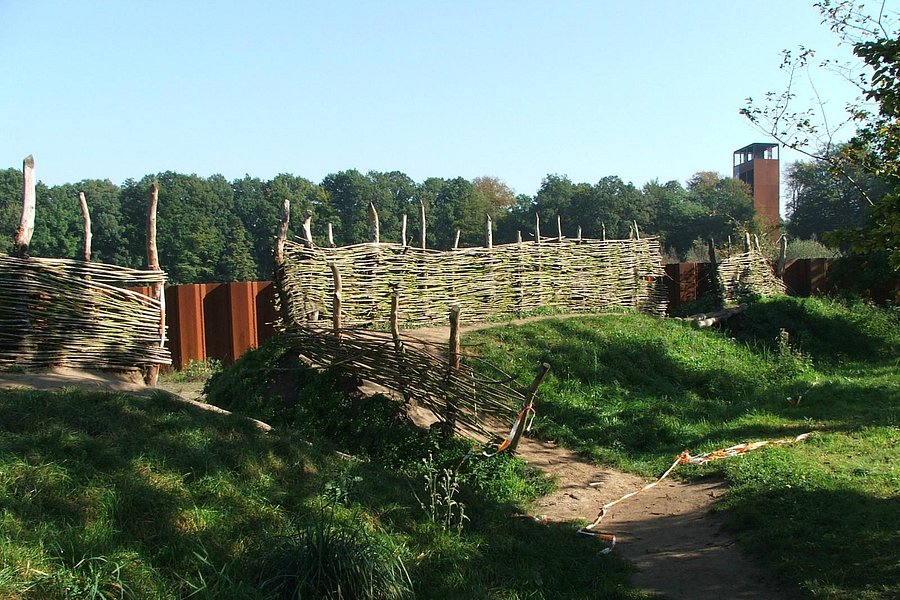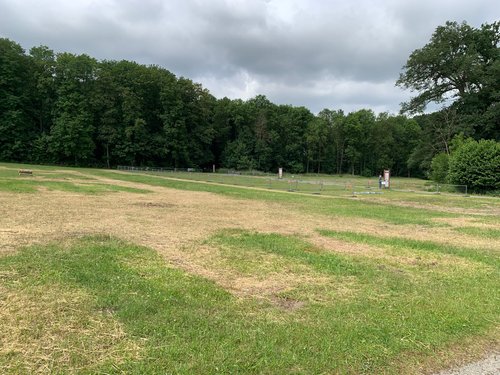Varusschlacht Museum und Park, Lower Saxony, Germany
4.0 (108 reviews) Spent Ranking #1 in Bramsche Speciality Museums

Great visit but a little reading beforehand makes it even better
I stayed in Minden and it’s bit over an hour on the autobahn to get there. The Varusschlacht is where archaeological finds were made suggesting a Roman encampment and the possible site of the Teutoburg Forest battle. The site and museum is well organized with plenty of items found on display including Roman coins, remnants of shields and arrowheads. The museum is housed in a watchtower which provides an overview of the lay of the land and of the battlefield. There is also a gift store and cafeteria nearby as well. A lot of the displays are in German only but there are some English translations. This was no issue but a tip: if you’re not familiar with what happened, you should do a little research as the information provided likely won’t paint a complete picture. In all, it was a great day out to get see the countryside and the likely site of one of the most important battles fought in the ancient world was a great thrill. Any student in history would get a similar thrill




Address
Venner Str. 69 Kalkriese, 49565 Bramsche, Lower Saxony Germany
Mobile
Website
http://www.kalkriese-varusschlacht.de/
Current local date and time now
Saturday, May 11, 2024, 20:55
User Ratings
4.0 based on (108 reviews)
Reviews
-
5StevenKolsteren 5:00 PM Jul 6, 2021
A place for learning and contemplation
The Varusbattle where the German Arminius or Hermann as he was later called, defeated the Romans is important for European history. In this excellent museum, the emphasis is not on the historical figures. It painstakingly shows how the battle must have been, in a narrow corridor between the hills, the marshes and a slippery wall built by the Germans. Nowadays the landscape is totally different, but the outside park shows with steel plates, a ditch and explanations how it must have felt. Moreover there are modern pavilions fore seeing differently, hearing ad asking questions. In the visitors center there are exhibitions, in the museum itself with a watchtower, excellent hand-on and audiovisualal exhibits, explaining how the archeologist unravel history through small finds or colours of the ground. Well done. Totally worth the admission and the detour- there is a free parking and a bus connection.
-
3BelisariusUK 5:00 PM Mar 13, 2017
ESSENTIAL TO VISIT BUT IT COULD BE SO MUCH MORE
I love history and especially Roman history. If you have any interest in those subjects you must visit this museum - this was a major event in the story of the empire and of Europe. I usually read other people's reviews of places and try to be as fair as possible because my tastes are not the same as those of others, but I am not surprised by some of the comments. Let's start with the good points; 1 Imagine any ancient artifacts in any museum that you have seen. The nature of the artifact may be obvious but what about the story behind it? What makes this place so fantastic and almost unique is that you do know the story behind them. 2 The Park - a paved pathway leads from the museum to the large open area. This pathway has been placed so as to follow the route of the greatest concentration of finds. The lie of the land is also very obvious - as you follow the slope, the hill is to your left and the slope descends on the right to a very flat and obviously still marshy area. As you start on the path it is very easy to imagine the last march and a last stand. It is very atmospheric. Slabs are placed at various intervals - all in German. Efforts have been made to show the level of the ground and the type of flora prevalent at the time. The "ambush" rampart has been reconstructed in part - all excellent. 3 The artifacts - many of those displayed are superb, especially as you know the story. 4 The tower gives an excellent view of the "battlefield", which was, in effect, the last part of a long running fight. 5 Two exhibits deserve mention. One is a model of 2 legions that runs the length of one huge display room that is designed to show how strung out the legions' line of march would be. The other is a life size tableau displaying various artifacts, pieces of uniform, weaponry etc. showing where on the figure they came from. Excellent. 6 Cost - not cheap but worth it. 7 The attached Gasthaus does good food and is comfortable and airy. 8 Free parking. 9 Easy to find. Now for the "Not So Good" 1 The 3 huge rusty metal boxes in the Park. Why? Supposedly interpretative? They look as if they are rejects from a modern art museum. They spoil the Park and the atmosphere as they are so intrusive and seemingly pointless. 2 Wasted space in the museum. The walls are very high (see photo) and are crying out for murals, paintings, anything. 3 The majority is in German. No problem as it's a German museum but a greater effort should be made to cater for other languages, especially with respect to the many slabs in the park. 4 Artifacts. There aren't many on display, although those which are are superb. Numbers have a quality all of their own - more effort should be made to display more of them - there's plenty of space. In addition, some artifacts are displayed in narrow little cracks in high walls - why? 5 Named individuals. Apart from the commanders, there is a tombstone showing a named centurion. However, I am only now coming to realise that certain artifacts have names (plural) on them. I knew of one at the time - an armour clasp with the name "Marcus Aius". Is he mentioned in the museum? no - why not? I asked a staff member and was told which exhibit it was - but the name was on the back with no indication of the name anywhere in the museum! I bought an excellent book on the story in English in the museum - from this I have discovered that there are apparently a number of artifacts containing names. There is no indication where these might be. In a museum about history, especially one which covers such an important event, failure to highlight these people is a serious failing. To the owners I would say that you have a unique place here and that a great deal has been achieved. However, it deserves more.